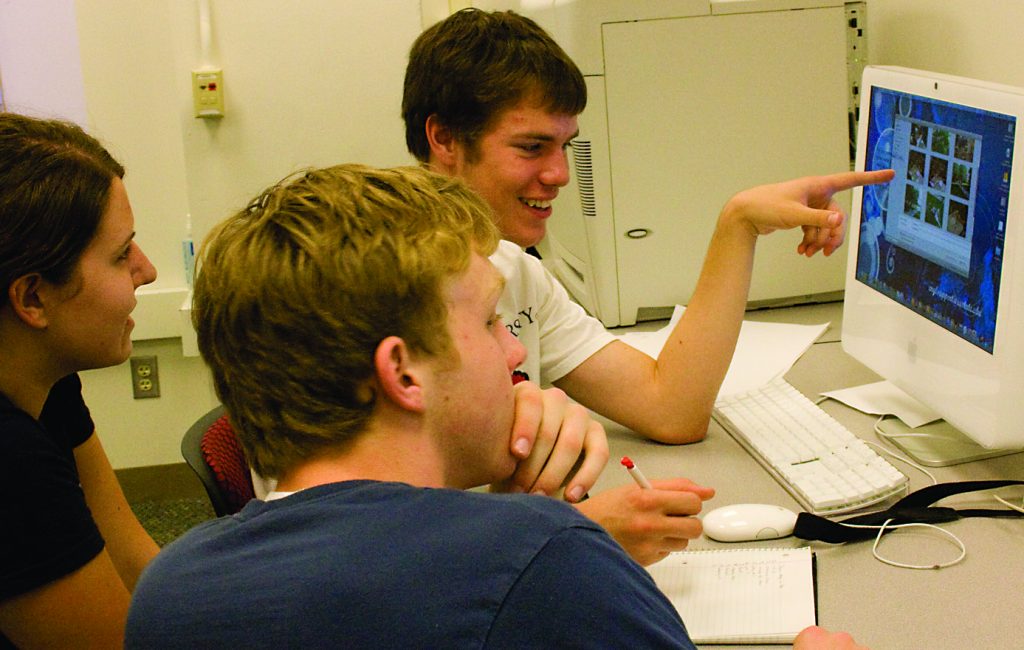Activities that promote collaboration among students can greatly enhance the ISUComm Foundation Courses. Collaborative activities can give students opportunities to participate in class and to solve language-related problems in both small- and large-group settings. Small-group activities, peer-response groups, panel discussions, computer classroom exercises, and other collaborative activities are useful pedagogical methods, especially when you carefully plan and monitor these activities. You are encouraged to integrate collaborative techniques into the English 150 and 250 classrooms.

Collaborative work can take many forms in the ISUComm Foundation Courses, including peer response, small-group invention exercises, poster presentations, and slide presentations. Even one-on-one conferences with the instructor can foster collaboration in such a way that students learn to recognize their instructor as a partner and mentor in a process where they are developing their own rhetorical strategies. These forms of collaboration are highly encouraged; however, they need to be distinguished from formal assignments in which two or more students collaborate throughout the process to create a single finished document. The guidelines below are directed toward these kinds of collaborative writing assignments in which students work together to create a single document to fulfill one of the six to eight assignments required for the course.
When considering a collaborative writing assignment, keep in mind that the ISUComm Foundation Courses are general education courses intended to develop each student’s communication skills as a preparation for the student’s academic career. Individual, rather than collaborative, writing assignments are the most direct way to meet this goal and are the norm. Advanced writing courses such as Business Communication (English 302) and Technical Communication (English 314), in which the instructor may simulate communication in real-world organizations, are often more appropriate settings for collaborative writing assignments.
However, because students can mutually benefit from group work, collaborative writing assignments may play a role in the ISUComm Foundation Courses if you carefully monitor the process. Below are some guidelines for assigning collaborative projects:
One Major Collaborative Assignment. If you assign more than five major assignments, you may give one formal writing assignment that students do collaboratively. You may, of course, assign additional collaborative activities as time permits (e.g., group invention exercises, presentations, panels).
Collaborative Assessment. If you elect to give a formal collaborative writing assignment, you should closely monitor the writing of each student in a group. For example, you might evaluate the group’s work as well as each student’s contribution to the project, based partially on the student’s documentation of their work.
Typical Collaborative Assignments. Collaborative projects are often used for group composition of brochures, newsletters, fact sheets, or other artifacts, in addition to oral presentations, poster presentations, or slide presentations. If groups are creating a slide presentation or designing a poster, ask students to designate roles for each team member. For instance, for a slide presentation, the group might together decide upon the layout design and then individual team members could create a minimum number of slides.
Small-Group Work. Working in teams is critical to contemporary life from the workplace to social, political, and religious organizations. Such collaboration is not instinctive, however, particularly in American society with its emphasis on individuality and competition. You’ll need to model effective group work, giving students a chance to analyze, practice, and reflect on group experiences. Many reality TV shows, despite their scripted nature, show people working together toward a group goal. Using group behaviors (download a group-assessment sheet here) and the discussion of group tasks in the Student Guide (pp. 52–56) your students can analyze the actions of such groups, identifying those individuals and specific behaviors that contribute positively to group success. Local access TV can be a good source for city council meetings and other such groups in action, and videos of other public meetings are available on the internet. You can also videotape classroom groups and have students evaluate and reflect on opportunities for group members to intervene in the flow of group dynamics.